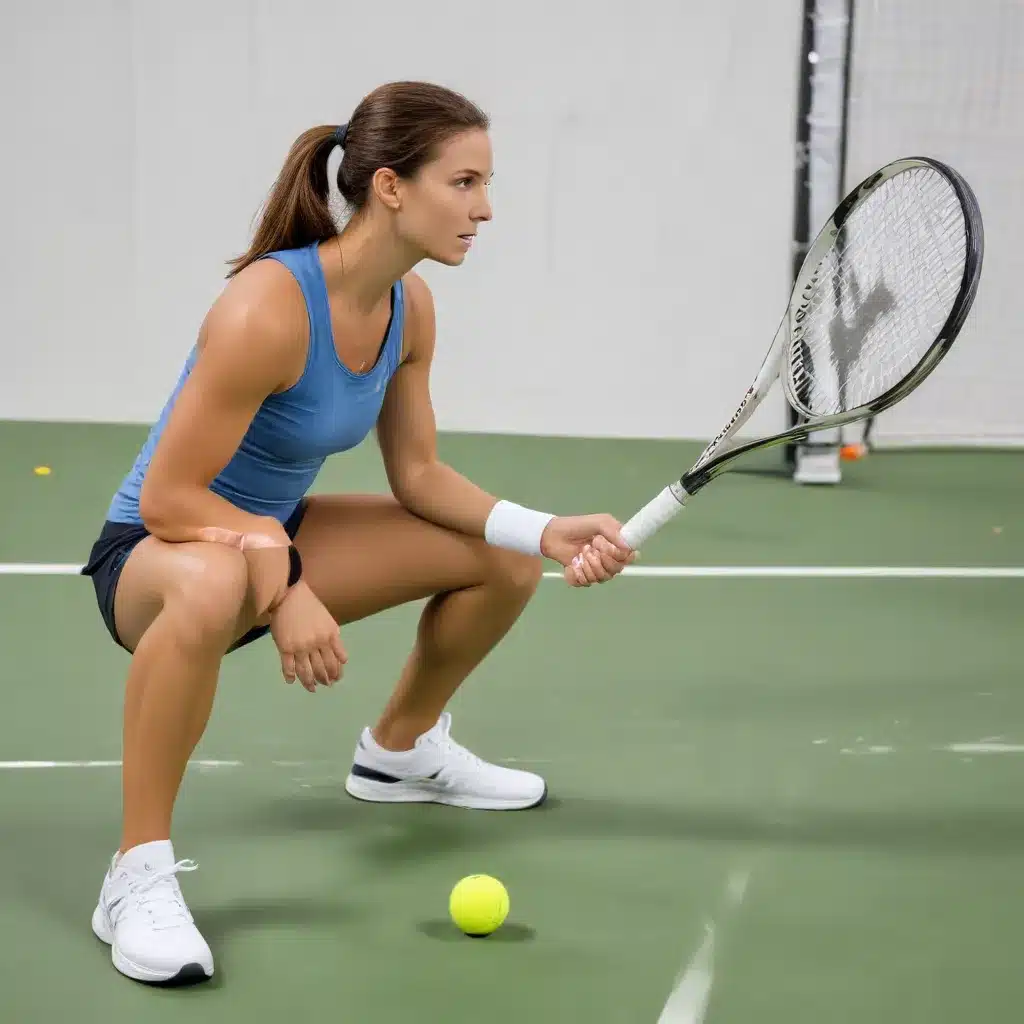
Navigating the Regulatory Landscape for Tennis Rehabilitation in London
As the tennis season in London approaches, it’s crucial for players, coaches, and rehabilitation specialists to stay up-to-date with the latest regulations and best practices for player recovery and performance enhancement. In the city’s vibrant tennis community, ensuring compliance with local guidelines is not only essential but also a key factor in delivering effective rehabilitation and training programs.
In the UK, the use of electrical modalities, such as direct current (DC) stimulation devices, for injury rehabilitation and performance optimization is governed by the Medicines and Healthcare products Regulatory Agency (MHRA). These devices, often employed in innovative recovery strategies, must be prescribed and used under the supervision of a licensed practitioner, whose scope of practice encompasses the application of such technologies.
For tennis players in London, working with qualified physiotherapists, sports medicine specialists, or chiropractors who are well-versed in the MHRA regulations is crucial. These licensed professionals can not only provide the necessary oversight but also leverage advanced techniques and equipment to accelerate the rehabilitation process while ensuring compliance with local guidelines.
Unlocking the Potential of Neuroplasticity in Tennis Player Recovery
One cutting-edge approach that has gained traction in the world of tennis rehabilitation is the utilization of DC stimulation technology, specifically designed to harness the body’s natural neuroplastic abilities. By targeting the nervous system’s response to injury, these innovative therapies aim to reset neurological patterns, reduce excessive guarding mechanisms, and restore optimal function, ultimately accelerating the healing process.
Tennis players in London can benefit from this targeted approach, which integrates specific movements, exercises, and manual techniques alongside the DC stimulation. This integrated methodology aims to retrain the nervous system, allowing for significant functional changes and adaptations that can lead to reduced pain, increased range of motion, improved coordination, and faster recovery timelines.
Incorporating these neuroplasticity-based treatments into a comprehensive rehabilitation program can be particularly advantageous for tennis players, as the sport’s demands often place significant stress on the musculoskeletal and neurological systems. By addressing the root causes of chronic pain and imbalances, players can not only recover from injuries but also enhance their overall performance and resilience on the court.
Optimizing Tennis Player Recovery and Performance with Advanced Technological Solutions
In addition to neuroplasticity-driven therapies, tennis players in London can explore a range of advanced technological solutions to support their recovery and training programs. From high-tech imaging systems that analyze movement patterns to specialized equipment designed for strength and conditioning, these cutting-edge tools can play a pivotal role in enhancing player rehabilitation and performance.
For example, players may work with physiotherapists or sports medicine specialists who utilize motion capture technology to assess the biomechanics of their movements on the court. By identifying areas of dysfunction or imbalance, these professionals can develop tailored rehabilitation plans that address the specific needs of the individual player, ultimately reducing the risk of future injuries and improving overall athletic performance.
Furthermore, the integration of wearable technology, such as smart textiles and sensors, can provide valuable insights into a player’s recovery and training progress. By monitoring metrics like heart rate, muscle activity, and movement patterns, these devices can help players and their support teams make informed decisions about training load, recovery strategies, and injury prevention measures.
Navigating the Financial Considerations of Tennis Player Rehabilitation in London
As players and their support teams explore the latest advancements in tennis rehabilitation and recovery strategies, it’s essential to consider the financial implications. The costs associated with these innovative treatments and technologies can vary, and understanding the various options and their associated price points is crucial for players in London.
For instance, the use of DC stimulation devices, such as the Neubie, may incur an initial investment, as the equipment is typically purchased or leased by licensed practitioners. However, the long-term benefits of accelerated recovery and enhanced performance can often outweigh the upfront costs, making these treatments a worthwhile investment for serious tennis players.
Similarly, the implementation of advanced imaging technologies, wearable sensors, and specialized training equipment can require a financial commitment. To manage these expenses, players may explore options like partnering with sports medicine clinics or physiotherapy practices that offer comprehensive rehabilitation packages, or seeking support from national or local tennis organizations that provide funding or subsidies for player development programs.
Cultivating a Collaborative Approach to Tennis Player Rehabilitation in London
Effective tennis player rehabilitation and recovery in London requires a collaborative effort among various healthcare professionals, coaches, and trainers. By fostering a multidisciplinary approach, players can benefit from the expertise and specialized knowledge of a range of experts, ensuring a comprehensive and tailored recovery plan.
Physiotherapists, sports medicine specialists, and chiropractors can work closely with tennis coaches and strength and conditioning coaches to develop integrated rehabilitation and training programs. This collaborative effort not only addresses the immediate needs of the player but also focuses on long-term performance enhancement and injury prevention.
Moreover, the engagement of sports psychologists and nutritionists can further complement the rehabilitation process, addressing the psychological and holistic aspects of the player’s recovery journey. By addressing the physical, mental, and nutritional well-being of the athlete, this collaborative approach can help players achieve a more comprehensive and sustainable recovery, ultimately enhancing their performance on the court.
Conclusion: Embracing the Future of Tennis Rehabilitation in London
As the tennis landscape in London continues to evolve, players, coaches, and rehabilitation specialists must stay at the forefront of the latest advancements in injury recovery and performance optimization. By navigating the regulatory landscape, exploring innovative neuroplasticity-driven therapies, and incorporating cutting-edge technological solutions, the tennis community in London can redefine the boundaries of player rehabilitation and recovery.
Through a collaborative, multidisciplinary approach that prioritizes compliance, technical expertise, and financial considerations, the city’s tennis players can unlock new levels of resilience, agility, and excellence on the court. By embracing these transformative strategies, the tennis community in London can position itself as a global leader in player development and recovery, inspiring others to follow in their footsteps.

